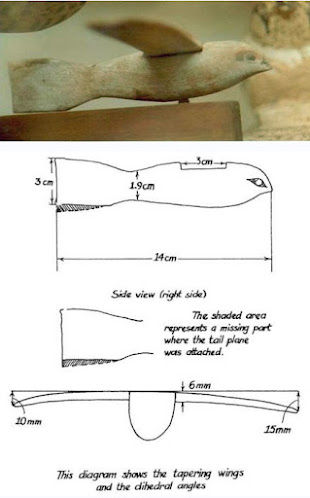National Native American Heritage Month
Part 4: Separate Realities
The Two Americas: "Whitewashing History”
 |
Halves of two sculptural heads: (Left) A marble carving of a Greek head, of a Caucosoid racial stock, representing Europe's Mother Civilization.
(Right) A gigantic basalt 14-ton stone Olmec head called "El Rey" (The King) is of an Afro-Asiatic racial mixture, representing the Mother Civilization of the Americas. [This replica is on the campus of the University of Texas, the original is at San Lorenzo, Mexico.]
What if America had the opportunity to develop along two separate realities? This Indigenous Month's blog begs the following questions.
Question #1 for this month:
Why did “real history” only begin in 1492?
As a Tri-Racial person born in the Americas, I’ve asked myself, “What if my European ancestors did not come into the Americas and disrupted my Amerindian ancestor’s Civilization Progress, and did not do the following?”
- Did not bring European diseases to wipe out over 100 million of my Amerindian ancestors, cut down vast forests, redirected rivers, over-fished the oceans, rape the earth's minerals, build coal & oil-smoking factories, then obliterated the scientific and organizing abilities of vast Indigenous empires and governments. Global Warming, anyone?
- Did not steal entire territories, gold, exotic woods, other precious treasures, and Indigenous ideas, to build universities, cathedrals, palaces, and armies to fight wars in Europe and colonize most of the rest of the world.
- Did not enslave my African ancestors to build their societies in Europe and the Americas.
- Did not “borrow” the Iroquois Constitution (Guyanashagowa) to build a “More Perfect Union" to orderly construct and govern the young United States of America.
 |
| The author's illustration of how we are taught the history of the Americas. |
WHAT IF?
 |
A FUTURISTIC ASIA EXTENDED: An imagined image of an Indigenous Mexican "Asiatic woman" of our Western Hemisphere. Her ancestors arrived here over 100,000 years ago (according to new discoveries, although this early date is not believed by all current archeologists). She is standing on the roof of her apartment building, overlooking a city on Chakoia (near today's St. Lois, Missouri). Next to her is a gravity-defying, hovering Eagle-canoe with others flying with passengers over the city behind her. Just think. the craft was constructed from plans in the Sun Pyramid of Teotihuacan in Central Anahuac (Mexica or Aztec name for Mexico), similar to a model found in an Egyptian pyramid. What if this image above could be that of an indigenous woman in 1700, on top of her Aztec/Mexica-influenced cityscape in the continental US? What if Spain had not meddled in the developmental progression of islands and continents that they misnamed a "New World"? NOTE: Ancient Egypt, Greece, and Rome were the influences that civilized Europe's development. In Asia, there were ancient India and China, and others in Indonesia which were the civilizing models in that continent. Similarly, in my idealized future, in the Americas, the Olmec, Maya, and Aztec (Mexica) Empires, and other local ones would possibly have been the models adopted by the rest of the Americas. |
 |
Above: "The Saqqara Bird is a small wooden figurine that was excavated in 1898 from a tomb in Saqqara, Egypt. It’s estimated to be about 2,200 years old and is shaped something like what we’d recognize as a modern-day airplane with the head of a bird. It’s a controversial piece because it’s prompted some people to speculate that the ancient Egyptians may have understood the processes of aerodynamics and that the Saqqara Bird may have been a scale model of an actual working aircraft or glider of some type." --By Doug Aamoth, June 09, 2010, --Time |
|
What if, instead of murdering Montezuma and many in his empire, Cortés and Taino representatives of the Bagua (Caribbean) Nations met in Madrid, Spain at a United States of Europe's first conference. In this scenario, they would have been at the Spanish court of Queen Isabela and King Ferdinand to negotiate the first shipment of guanin (14k gold), and pearls from Venezuela's Margarita Island in exchange for four tonnes of Spanish's high-quality Toledo steel. The Taino also brought a team of batey ball players whose rubber ball astounded the Spanish court.
This idealized engraving shows Aztec King Montezuma II meeting Spain's Hernán Cortés in Anahuac. (Montezuma II ruled from 1502 to 1520. But what if Cortés was an honorable man instead of a murderer? - What if the result of the introduction of the Mesoamerican negotiations was that a deal was made with the Maya Emperor for rubber trade to the Spanish after they had seen the ball game. The ball players had shown the Spanish how to play batey by allowing them to kick the ball instead, mimicking this ancient player on a Teotihuacan mural below. The Spanish then began to use imported rubber for their cartwheels. Next, the automobile!
- What if instead of murdering Queen Anacaona in Ayti Bohio (Haiti) in 1504, Nicolas de Ovando had invited her to the Spanish Court? There she could have negotiated the trade of Taino guanin (14k gold) for Spain's prized high-quality Toledo steel?

Idealized image of Anacaona arriving at the Spanish Court of Ferdinan & Isabela. - What if there could be a visit from the Oba of Benin, Nigeria to the Bagua Nation's headquarters in Ayti Bohio where he would have met with Cacike Anacaona for trade talks in the importation of ivory from the West African Union. Ambassadors would also be exchanged. The Oba and his advisors would go on to Tenotchlan, Mexico to negotiate the trade agreement for Teotehuacan obsidian and rare jade.

Benin commemorative bronze of the Oba of Nigeria and his attendants.
How different our history would have been if this had been the defining events of our hemisphere instead of murder, theft, and slavery.





No comments:
Post a Comment